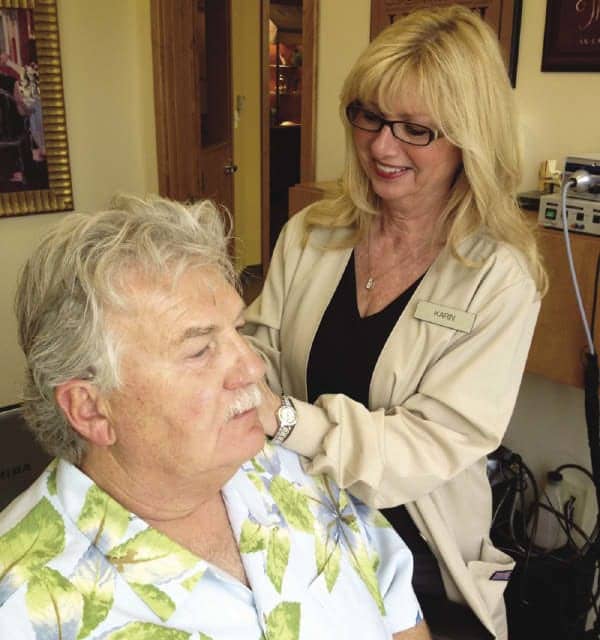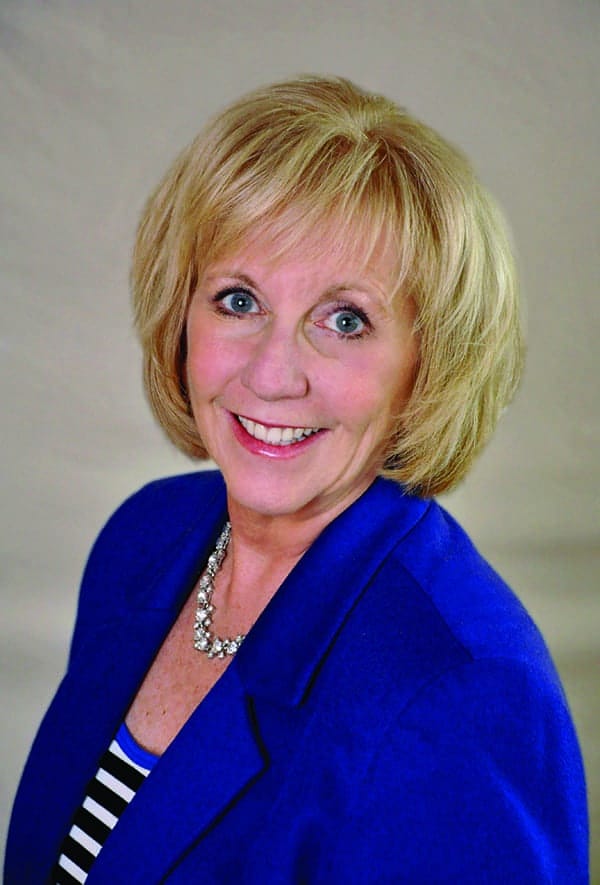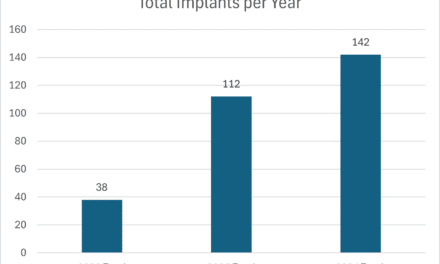By Gyl Kasewurm, AuD
Today’s patients have many choices for almost every type of product or service they need—including a choice in hearing care professionals. This is why it is critical for practice success to provide patients with an exceptional experience so they leave happy.
There are four factors that should be considered to successfully enhance the patient experience: 1) Good practice presentation; 2) Adopting a patient-driven model of care; 3) Effectively overcoming objections, and 4) Monitoring and measuring the overall patient experience.
Good Practice Presentation
First impressions are lasting, so the way a practice presents itself is extremely important. Consider how most of your patients were introduced to you and your services. Was it through referrals from happy patients who had been to your office and experienced the level of care you provide? Was it through direct mail or an ad that stated, “We sell discounted hearing aids?”
Remember, from the time patients find out about your practice, call for an appointment, see you, and walk out of your door, they are making conscious and unconscious observations about you, your staff, and your environment. In many, if not most cases, the patient is not judging your technological expertise, because most patients aren’t familiar with hearing healthcare and don’t know what to expect.
Judgments determining the level of care received are often derived from impressions obtained from the practice and the way you and the staff treat them. If they walk into your reception area and see shabby furnishings, walls that are less than clean, and inattentive staff members, they’re going to feel like yours is a practice that doesn’t make patient care a priority. These patients will be less likely to take your hearing healthcare recommendations to heart or return to your practice in the future.
Because the majority of our patients are from a generation used to “the personal touch,” every dispensing office/practice should make it a point to greet patients warmly and make them feel welcome the second they walk in the door. Be prompt and personable. Tailor your waiting room with things that will accommodate your patient’s needs, and be sure your staff has the training necessary to effectively serve them.
Unfortunately, the majority of people who have hearing loss never walk through our doors. Therefore, when a patient makes the choice to hear better, we need to make sure the experience they have with hearing healthcare is a good one. When a patient feels welcomed and appreciated, it will leave a lasting impression on them and they will be far more receptive to your treatment recommendations.
Becoming a “Purple Cow”
There is a great book called Purple Cow,1 by Seth Godin, in which he notes an experience he had while traveling through the beautiful French countryside. He and his family saw several large herds of cows roaming up and down the pasture. The family noticed the cows for about a mile or two—but after a while they stopped paying attention to them because they all looked the same. The observation Godin made was that, in order to be noticed in a sea of sameness, you must stand out. You need to become the “purple cow” in your industry. One way we can do this is by enhancing the patient experience.
It’s essential that consumers have a remarkable experience for any business to be truly successful. Think about Starbucks. They give their customer a remarkable experience, with an exceptional setting, a range of choices, and attentive staff. As a result, they are the “purple cow” in their industry. As I stated before, 75% of people who need our services will never visit our practices. So when patients seek us out, we need to make sure their experience is valuable and remarkable so they remember us.
A recent MarkeTrak study2 indicates that 35% of people will not repurchase a hearing aid solely based on the brand they had purchased before. This shows that, in hearing healthcare, there is really very little brand recognition when it comes to technology. Nobody comes in saying, “I want this specific brand.” Patients are far more likely to associate your services and hearing healthcare with you and the brand you create in your practice.
If this is not a brand that is positive and memorable to them, they will be less likely to repurchase hearing aids from you. Because it’s much easier and much cheaper to keep a patient than to constantly look for new ones, it is in the best interest of your practice’s success to craft a remarkable brand.
Start by taking an audit of your practice. This will give you insight into how patients perceive you. Conduct a “secret shopper” test and analyze the results to determine what you’re doing right and what you need to improve upon. Check out your competition to get an idea of what may be working successfully in other practices. After you’ve done some research and experimentation, use the information you’ve gained to develop effective ways to differentiate your practice and become a “purple cow” by carefully defining and enacting your own image and branding.
Adopting a Patient-Driven Model of Care
Over 50 years ago, the “Father of Audiology,” Raymond Carhart, developed a protocol for delivering hearing care that was patient-driven.3-4 The Carhart Method consisted of a test battery that included functional gain testing for speech at two volume control settings, speech recognition thresholds in noise with and without amplification, speech recognition scores using monosyllabic words at moderate levels, and tests of tolerance for loud sounds, and the ability of the prospective wearer to evaluate different aids. During this fitting process, the patient assumed the “driver’s seat.”
While fitting methods have evolved considerably, it is encouraging that many modern practices are beginning to return to a patient-driven model. Because every person is unique, we need to let our patients drive the model of care that we provide. Living situations, handicaps, and expectations are unique to each patient and therefore, the process of providing hearing solutions really needs to be based upon the patients’ wants and needs.
Patients today are very diverse. You may see a 90-year-old rock climber one day and a sedentary 60-year-old the next day. In order to foster a strong bond between you and your patients, you can no longer simply group patients by their ages, but must treat each one individually. You need to be unique in your focus with every patient and make it a mission to find out what makes that person tick. Then use this newfound information to tailor your approach so that you can communicate effectively and address your patients’ needs.
Overcoming Objections
No matter how many differences practices have, there seems to be three main patient objections they all share.
1. Patients are fearful of what they are getting into because they don’t have enough or the right kind of information.
2. Patients are concerned with cost and all the talk they’ve heard about how expensive hearing aids can be.
3. Many patients are in denial about their problem and are already convinced they don’t need help.
Overcoming the fear objection requires developing a good case history and spending time getting to know the patient. This will give you a better understanding of what challenges the patient has and what level of care is needed to meet those challenges. Ask why they’ve hesitated to do something about their hearing problem. The answer will flush out their fear objections and allow you to deal with them in a subtle manner.
To overcome the cost objection, the practitioner should know and communicate the reasons why a certain type of technology is being recommended. You should clearly explain to the patient what is involved in the cost of the device and have some financing solutions available. Offering a no-interest financing option, such as CareCredit, can be a great way to make hearing health and optional technology more accessible to more patients. On many occasions, this service has been instrumental in helping patients in our practice get what they really need.
Lastly, dealing with patient denial is an important test for the hearing care professional. When patients say they’re not ready to act, what they usually mean is that you haven’t answered all their questions or made them feel like they really need to take action to improve their hearing. Listening, asking the right questions, and providing the right information are all essential components in overcoming the objections fueled by fear, cost, and denial.
Monitoring and Measuring the Overall Patient Experience
We need to let patients know we are committed to their hearing health for the long haul. If something in our practice is not working for them, or if they are not experiencing the results we communicated, we need to know it so we can address and correct those concerns. That is why it’s so important to solicit patient feedback.
Send out surveys to get your patients’ impressions of the practice, the services provided, and your recommendations. How important is it to survey your customers? Kochkin5 has shown that those consumers who receive any form of post-fitting survey (eg, formal mail, office, or phone surveys) report a greater degree of satisfaction with their hearing instruments. The average satisfaction of a customer who received a written office or mail customer satisfaction survey was 71-72% versus 57% for a customer who did not receive a survey (hearing aids less than 2 years old).
If a patient returns a survey saying they’re dissatisfied with something, call them and let them know that “if they’re unhappy, you’re unhappy” and you will make the necessary adjustments. You want to make sure your patients get the full value from what they have purchased. Try to go above and beyond what’s expected. You will be rewarded with increased patient satisfaction and fewer hearing aid returns.
In my practice, we have a theme that patients get connected to people, not to products. No matter how many advances we see in digital technology or the way in which we diagnose hearing loss, people will always be the focus of what we do.
We need to do everything possible to connect with our patients and build a level of trust. If the patient trusts you and believes your recommendation is coming from the heart, they are going to come back to you for more services. They are going to tell their friends about you. And they are going to spread the word in the community that your practice is a good place to go for hearing healthcare.
| Gyl Kasewurm, AuD, is an audiologist who has run a private practice in St. Joseph, Mich, since 1983. She is past-president of the Michigan Academy of Audiology, and serves as a consultant for CareCredit, Anaheim, Calif. |
Correspondence can be addressed to HR or Gyl Kasewurm, AuD, Professional Hearing Services, 511 Renaissance Dr, St. Joseph, MI 49085; email: [email protected].
References
1. Godin S. Purple Cow: Transform Your Business by Being Remarkable. New York: Portfolio Hardcover; 2003.
2. Kochkin S. On the issue of value: hearing aid benefit, price, satisfaction, and brand repurchase rates. The Hearing Review. 2003;10(2):12-25.
3. Carhart R. Tests for selection of hearing aids. Laryngoscope. 1946;56:780-794.
4. Carhart R. Selection of hearing aids. Arch Otolaryngol. 1946;44:1-18.
5. Kochkin S. Factors impacting consumer choice of dispenser and hearing aid brand; Use of ALDs and computers. The Hearing Review. 2002;9(12):14-23.






